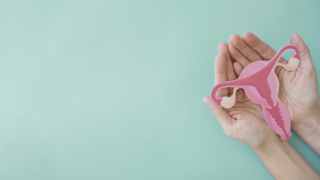In this article:
1. Breathing Techniques: Find Your Rhythm
Breathing isn’t just something you do to survive; it can actually help you thrive during labour. Controlled breathing encourages your muscles to relax, supports better oxygen flow, and can ease feelings of panic or overwhelm.Popular breathing methods include:
- Slow and deep breathing – Helps reduce anxiety and can be used in early labour.
- Patterned breathing – Involves specific rhythms like “in for four counts, out for four counts” to help with focus during intense contractions.
- J-breathing (hypnobirthing style) – Used during pushing, focuses on breathing down rather than bearing down forcefully.
2. Water Birth: Letting Warmth Do the Work
Immersing yourself in warm water during labour can do wonders for relaxation. Water birth, whether you deliver in water or just labour in it, can help lower stress hormone levels, ease back pain, and even shorten labour duration for some.Benefits of water birth include:
- Buoyancy helps reduce pressure on joints
- Warmth can reduce the need for pain medication
- May improve blood flow to the uterus, leading to more efficient contractions
3. Movement & Positioning: Trust the Body’s Wisdom
Staying mobile during labour helps your baby descend more effectively and keeps your own energy flowing. Unlike the traditional flat-on-back position, being upright or changing positions frequently can offer real physical and emotional relief.You can try:
- Walking or slow dancing with a partner or doula
- Squatting using a birthing stool or an exercise ball
- Kneeling on all fours to relieve back labour
- Side-lying to rest while still encouraging descent
4. Hypnobirthing: Calm the Mind, Soften the Body
Hypnobirthing is a calm and empowering approach that uses affirmations, visualisation, and deep relaxation to help release fear and build confidence.Rather than seeing birth as a painful medical event, this technique views it as a calm, natural process.
How it helps:
- Reduces adrenaline (stress hormone) and boosts oxytocin (labour hormone)
- Helps create a positive mindset by gently replacing fear with calm and confidence.
- Encourages deep relaxation, which helps muscles soften and open
5. Massage & Counter-Pressure: Hands-On Relief
Touch can be incredibly grounding during labour. Whether it’s a light backstroke or firm counter-pressure on your lower back during contractions, the right kind of physical support can ease pain and promote relaxation.Helpful techniques include:
- Lower back pressure – Especially helpful for back labour
- Sacral massage – Encourages loosening of tense muscles
- Shoulder and neck rubs – Useful between contractions to release built-up tension
- Acupressure – Stimulating pressure points like the inner ankle or hand can influence labour progression (to be used only under professional guidance)
Your birth experience should honour your pace, your voice, and your power. Give yourself the space to explore what feels aligned and meaningful to you. Practice what feels comforting
FAQs on 5 Birth Techniques Could Be the Key to a Stress-Free Delivery
- Can I combine more than one technique during labour?
Absolutely. Most birthing individuals find that a combination of methods like breathing and movement, or water immersion and massage, works best depending on how labour unfolds. - Is hypnobirthing effective for a medically assisted birth or caesarean?
Yes. Even if you plan (or end up having) a C-section or medical intervention, hypnobirthing can be helpful for reducing fear and staying calm. - Are these techniques safe for high-risk pregnancies?
Some, like breathing and relaxation, are safe for almost everyone. Others, like water birth or acupressure, may need to be avoided depending on your situation. Always discuss your options with your gynaecologist or obstetrician - Will these techniques eliminate pain completely?
Not necessarily, but they can reduce its intensity and help you cope better. A sense of control can be just as important as pain relief.






